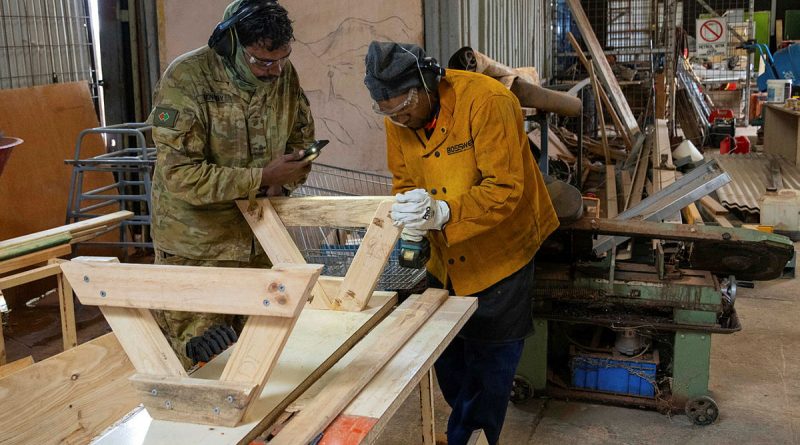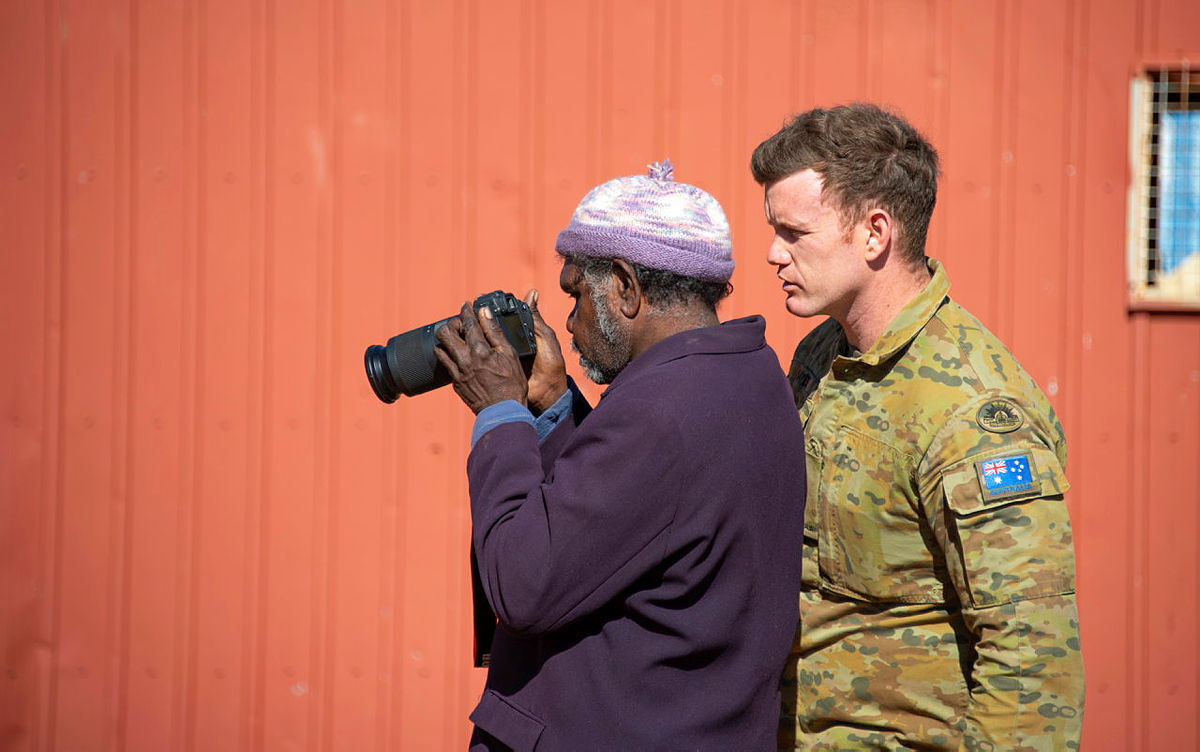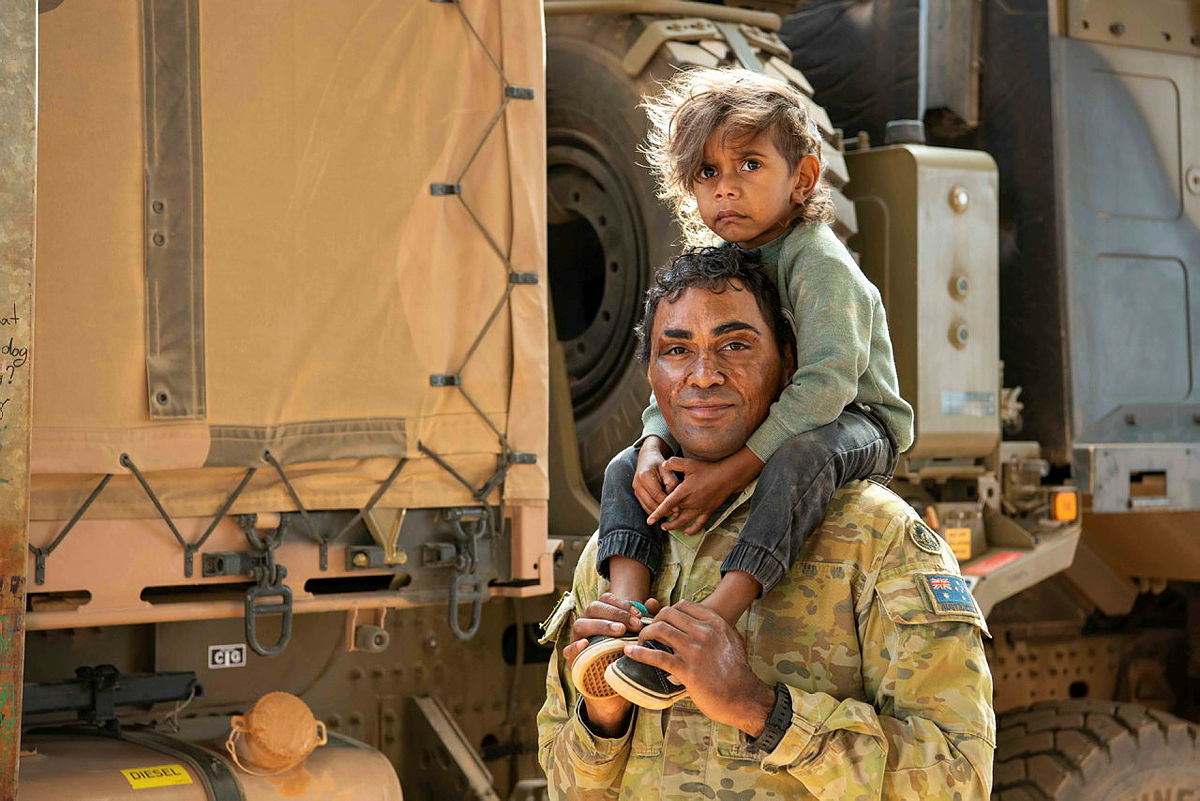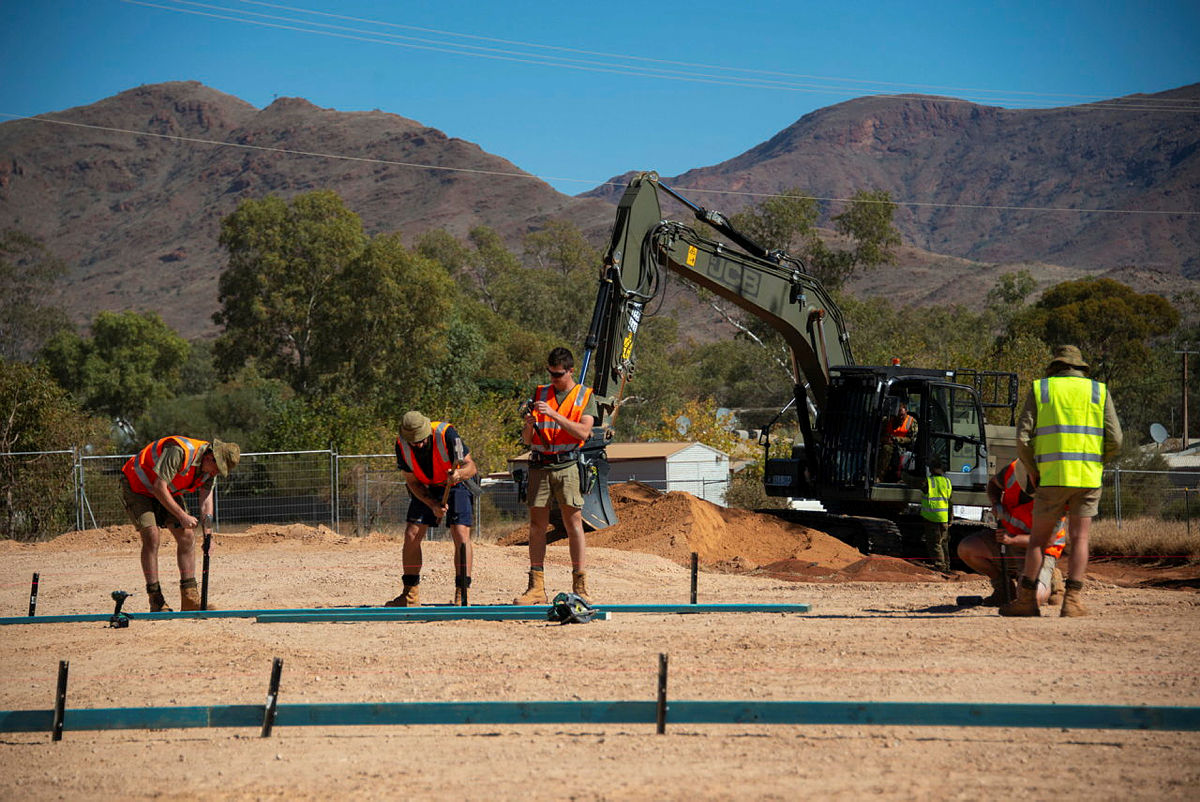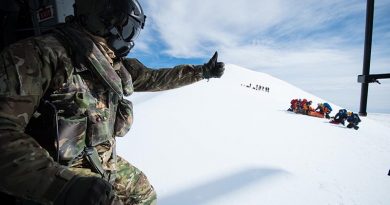Army building for Aboriginal community in red centre
Share the post "Army building for Aboriginal community in red centre"

The First Nations community of Amata in Australia’s red centre welcomed a 100-member Army Aboriginal Community Assistance Program (AACAP) contingent to their land last month.
CAPTION: Private Luke Kennedy assists a fellow Amata community member with the construction of a bench seat. Story by Major Evita Ryan. Photo by Private Jack Hayes.
This makes Amata the 50th community to benefit from the program since starting 27 years ago.
Nestled at the western end of the Musgrave Ranges that straddle the boundary of South Australia and the Northern Territory, Amata is one of the larger First Nations communities within the remote Anangu Pitjantjatjara Yankunytjatjara Lands in the northwest corner of South Australia.
Home to about 400 Anangu, who speak Pitjantjatjara as their first language and English as their second, the Amata community is known for its traditional ties and world-renowned Aboriginal artists.
During the next five months, Army personnel from 6th Engineer Support Regiment, 19th Chief Engineer Works and supporting units will live and work alongside the community.
They will deliver dedicated service provider accommodation, flood management system upgrades, vocational training and wellbeing initiatives, while taking part in reciprocal learning opportunities.
CAPTION: Private Jack Hayes teaches Yarrol Lewis how to use a digital SLR camera that will be donated to the Amata community on completion of the Army Aboriginal Community Assistance Program. Photo by Private Jack Hayes.
Anangu Elder Johnathan Lyons said it was the first time they had seen the Army in Amata, other than the North West Mobile Force, or NORFORCE.
“Army is going to be our neighbour for a long time,” Mr Lyons said.
“We had a welcome ceremony with the Army Band. The community are really happy we [have them] staying with us in Amata, working together, Army and community.
“It’s a big thing happening in Amata, AACAP is.”
CAPTION: Soldier and Amata member Private Cameron Young, of North West Mobile Force, with his son during the Army Aboriginal Community Assistance Program opening ceremony. Photo by Corporal Michael Cassidy.
A joint initiative between Army and the National Indigenous Australians Agency (NIAA) to address community needs in some of the most remote First Nations communities, the program capitalises on Army’s ability to employ a range of expertise that would not normally all be included in the one project.
After years of planning, engineers, carpenters, plumbers, electricians, plant operators, surveyors, logisticians, signallers, caterers, health professionals, transport specialists, mechanical and electrical technicians, vocational training professionals and multimedia technicians will leave a lasting impact on the Amata community over the coming months.
Since travelling to Amata to meet with NIAA representatives, Elders and community members over the past 18 months, 19th Chief Engineer Works project engineer Captain Osgar Murphy felt a sense of personal satisfaction in seeing construction works underway.
“When you come back repetitively, you create personal connections with community members,” Captain Murphy said.
“Seeing the benefits that AACAP will create for them is personally satisfying.”
Captain Murphy worked alongside designers and planners to ensure the program’s scope of works would deliver construction outcomes to meet the community’s needs.
“Language has been a big barrier, but working with NIAA and the community Elders through facilitated communication has helped to design an AACAP program that will indirectly benefit the community,” Captain Murphy said.
“We’re constructing three separate single-story buildings with nine self-contained units, each with a bedroom, a kitchenette and a bathroom.
“One of the buildings will have a communal laundry as well an accessible self-contained unit and an accessible two-bedroom unit.”
With construction expected to finish in September, it won’t be long before services such as health professionals, contractors and government service providers will have an accommodation hub they can use when visiting Amata.
In addition, AACAP 2024 will deliver a 960m swale (surface drain) along the northern and eastern sides of the township to direct floodwater away, strengthening the community’s flood resistance.
CAPTION: Soldiers concrete for the construction of the self-contained service provider accommodation in the Amata community. Photo by Corporal Michael Cassidy.
On-the-job training and mentoring in basic plumbing, welding, hospitality, catering, first aid and photography is also underway to help support employment pathways.
Additional upgrades and ‘tasks of opportunity’ will be identified and delivered in consultation with Amata’s community.
“The last couple of years we’ve been talking and fixing the program,” Mr Lyons said.
“Planning was like a snake; come this way, a little this way, but we work with Army and make it straight, like a spear, you know.
“It was a lot of hard work, but we have come together, Army and Anangu.”
.
.

.
.
Share the post "Army building for Aboriginal community in red centre"

